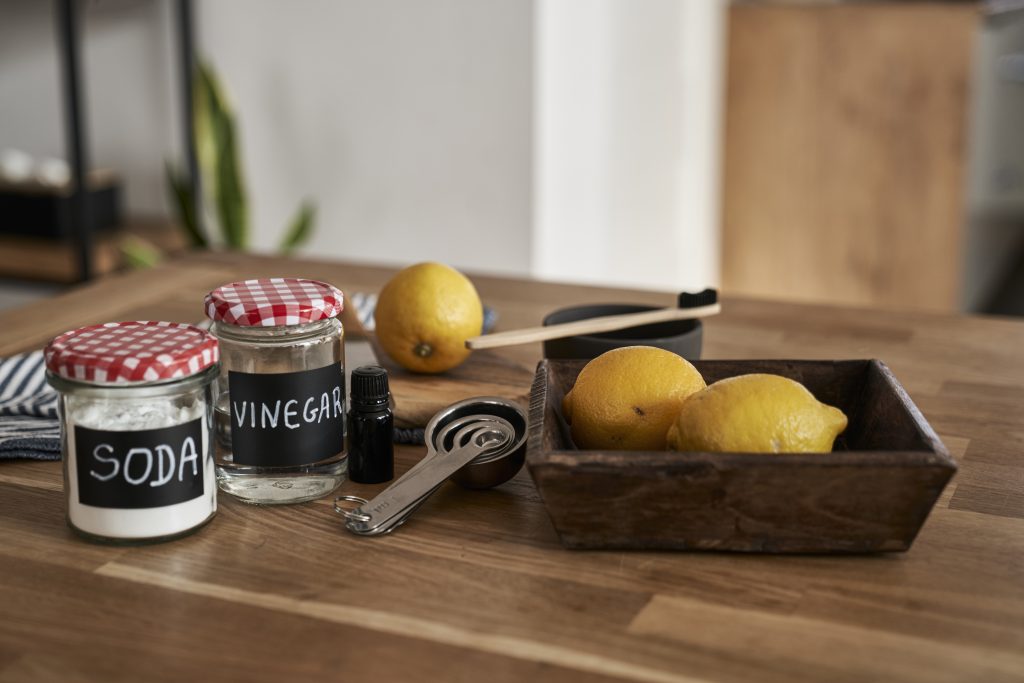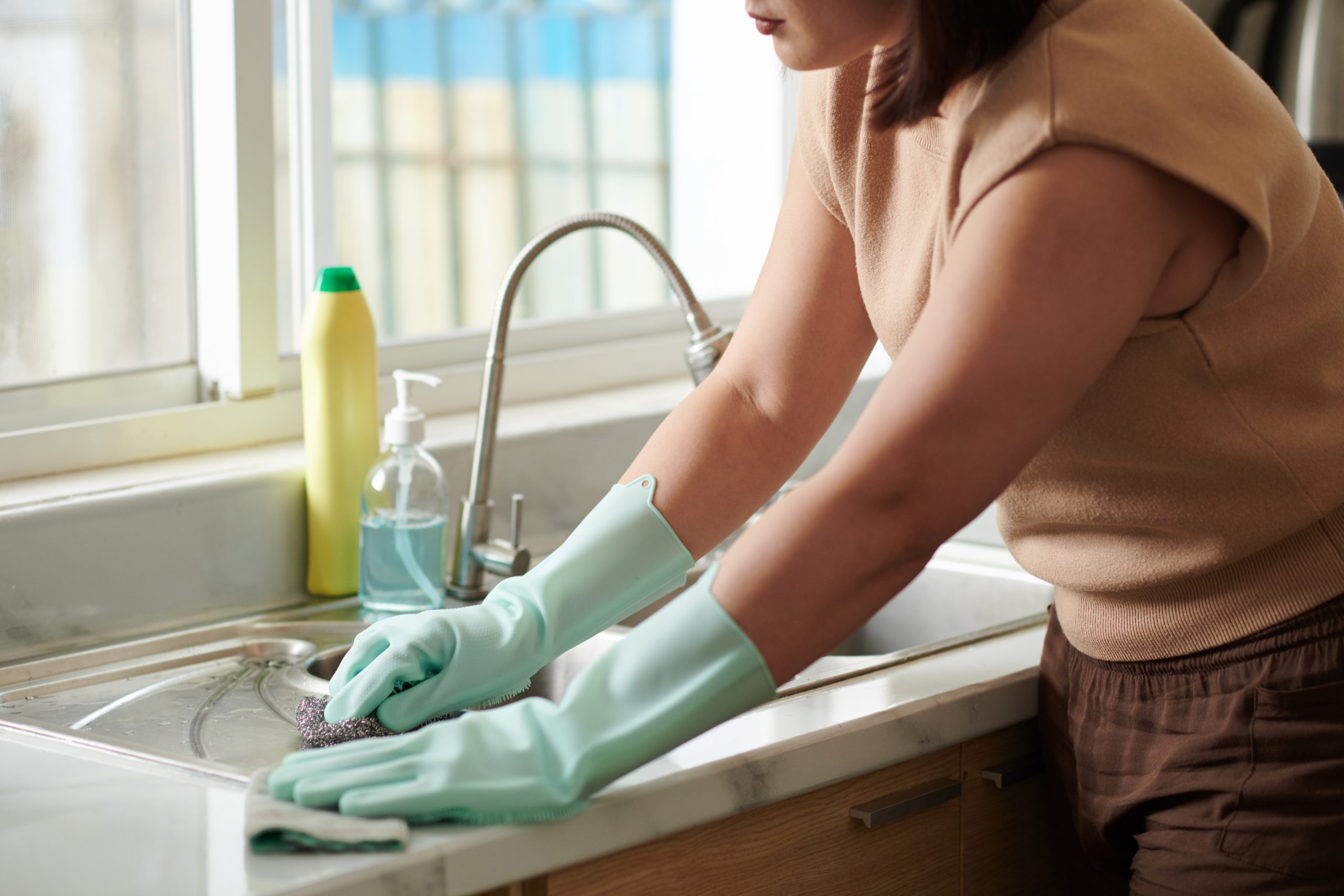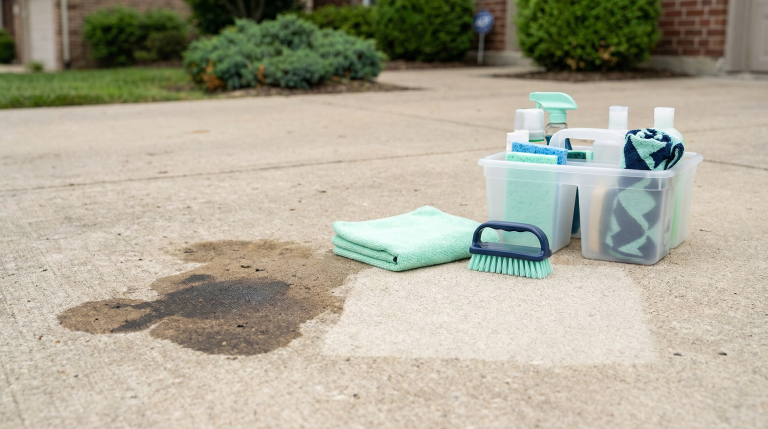How to Deep Clean Your Kitchen Sink in 10 Minutes or Less
Your home’s hardest-working spot isn’t the stove or the fridge—it’s the basin where you rinse produce, wash hands, prep meals, and tackle messy pans. And yet, it’s easy to overlook this high-traffic area when it comes to deep cleaning.
Even when it looks clean, this central hub can hide gunk, bacteria, and lingering odors. Luckily, you don’t need harsh chemicals or hours of scrubbing to get it truly fresh. In fact, with just 10 minutes, the right cleaning supplies, and a little know-how, you can deep clean and sanitize it the right way.

Why It Matters More Than You Think
Many people assume that running water and soap naturally keep this area clean—but the reality is quite the opposite. Every time you rinse off raw meat, pour out leftover milk, or toss a used sponge to the side, you’re introducing new bacteria. Your kitchen sink is one of the most germiest places in your home.
Germs like E. coli and Salmonella thrive in moist, food-friendly environments, especially those with leftover particles. These bacteria can linger on surfaces and contribute to foodborne illness if left unaddressed.
Letting dirty dishes pile up creates a breeding ground for bacteria, especially when food residue sits for hours.
If you’ve noticed dull spots, cloudy streaks, or a faint smell, it’s time for a refresh.
What You’ll Need

No need for a bucket full of industrial-strength products. Here’s a simple list of cleaning supplies most people already have at home:
- Dish soap
- Baking soda
- White vinegar or lemon juice
- A sponge or scrub brush
- Microfiber cloth or paper towels
- Old toothbrush (optional)
- Clorox or preferred sanitizer
- Olive oil (optional, for shine)
Tip: Be mindful with abrasive scrubbers—especially on stainless steel. A gentle approach can still remove grime without scratching the finish. You can also check out our list of DIY cleaning products.
A Step-by-Step Deep Clean For Your Kitchen Sink
Here’s a simple routine to refresh your kitchen’s busiest spot. For a full guide on how to clean every surface, explore our complete kitchen cleaning checklist.
1. Clear it out and rinse (about 1 minute)
Start by removing any dishes, scrubbers, or drain mats. Rinse everything down with warm water to sweep away leftover bits and loosen any stubborn gunk. If you’ve got a garbage disposal, give it a quick whirl—just to start with a clean, fresh base.
2. Lather and scrub (2 minutes)
Add a few drops of dish soap to your sponge and scrub every surface—including the rim, drain area, and faucet handles. Don’t rush this part—those areas collect grime and grease that can harbor germs. A toothbrush works well for tight corners and edges.
3. Deodorize and brighten (3 minutes)
Next, sprinkle a generous layer of baking soda across the surface. Drizzle a little vinegar or lemon juice over it and let the magic happen—it’ll bubble and fizz as it lifts away hidden grime and lingering odors. Use your sponge to gently work that paste into every corner, giving special care to any stained or dull spots that need a little extra refresh.
4. Rinse and dry (2 minutes)
Give everything a final rinse with warm water, making sure no cleaner or residue is left behind. Then dry it off with a soft cloth or paper towel—not just to avoid water spots, but to bring back that clean, cared-for shine that makes your space feel complete.

5. Sanitize and polish (2 minutes)
Finish strong by wiping down high-touch areas—like the faucet handle and rim—with Clorox or your favorite sanitizer. These are the areas most likely to spread germs, especially after handling raw food. Want that magazine-worthy finish? Add a drop or two of olive oil to a cloth and buff in small circles for a gentle glow and water-repellent finish.
Simple Habits That Keep It Cleaner Longer
- Wipe down daily. A quick rinse and dry after dinner can keep buildup at bay.
- Don’t let dishes linger. Even a few hours of food residue can introduce bacteria.
- Clean sponges regularly. Run them through the dishwasher or microwave them damp for 1–2 minutes.
- Rethink your sink mat. These can trap moisture and mold underneath—lift and clean them often.
- Keep sanitizer on hand. A quick spray on the faucet or drain after food prep helps stop germs before they spread.
When You’re Ready for More Than Just a Quick Fix
Doing a 10-minute deep clean once a week keeps things fresh—but when life gets busy, or your whole home needs some attention, that’s where we come in.
At Upstairs Downstairs, we’ve spent over 40 years helping families across Northwest Chicagoland enjoy homes that feel clean, calm, and cared for. Our trusted professionals use high-quality supplies, eco-conscious products, and flexible scheduling to make cleaning effortless—no in-home walkthrough required.
Whether you’re prepping for a big event, recovering from a move, or just want your weekends back, we’re here with reliable service and our satisfaction guarantee.
✨ Want a deeper clean—with zero stress?
Call (630) 415-3003 or (847) 808-0003 for a quick quote.
Or get a fast estimate online and let us take it from there.
Final Thoughts
Taking a few minutes to refresh this small-but-mighty space can make a big impact. You’ll cut down on germs, protect your family from foodborne illness, and enjoy a fresher, more inviting home.
So grab the baking soda and dish soap—because in just 10 minutes, you can bring back the shine.







